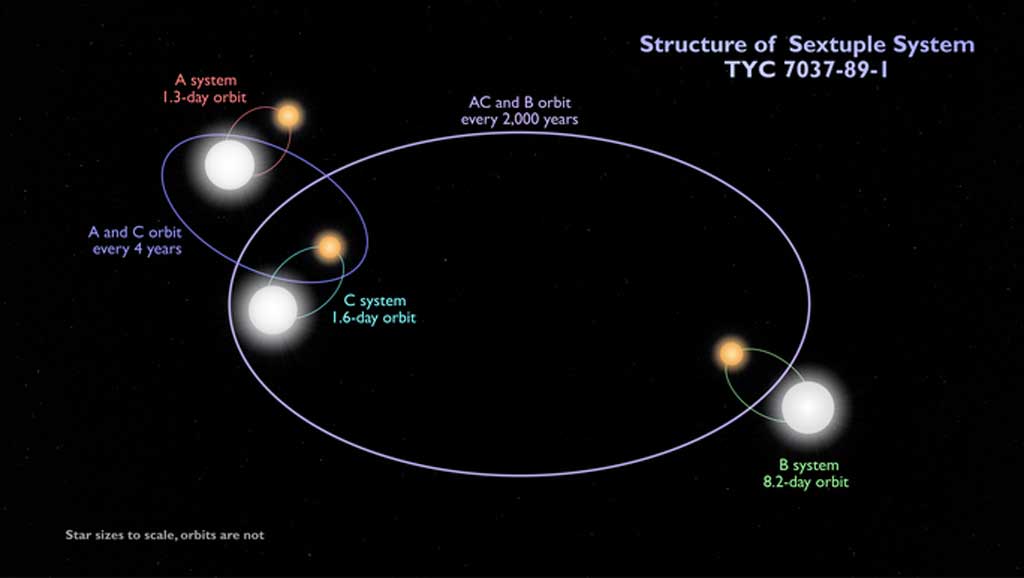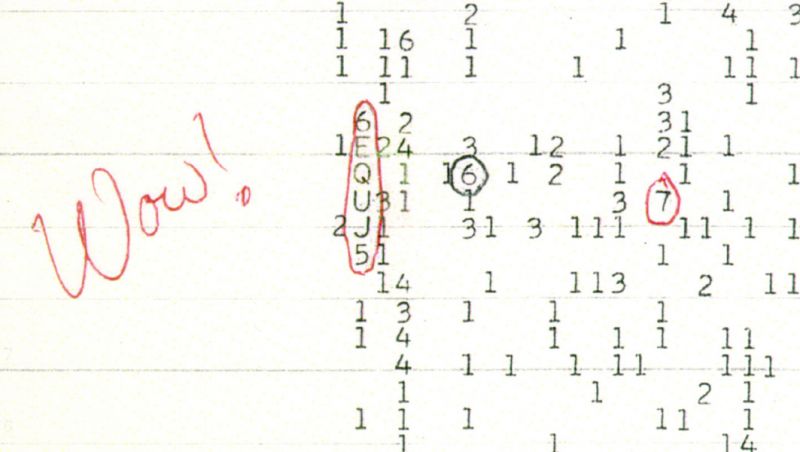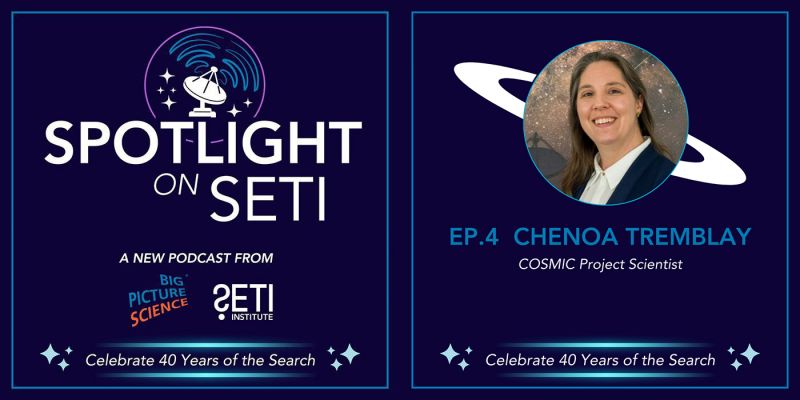
An international team of researchers led by Brian P. Powell at NASA's Goddard Space Flight Center and Veselin P. Kostov at the SETI Institute has identified a unique system consisting of six stars. The three binary stars form a gravitationally-bound system and each pair is producing eclipses. The star system, known as TYC 7037-89-1, was uncovered in data from the Transiting Exoplanet Survey Satellite (TESS) data with a neural network designed to detect eclipsing binary stars. This newly discovered complex star system is located in the Eridanus constellation, ~1,900 light-years away from Earth.
“Multiply-eclipsing multiple systems such as TYC 7037-89-1 enable simultaneous, precise measurements on the stellar sizes, temperatures, and potentially masses, of pairs of stars that share common history,” said Veselin Kostov, research scientist at the SETI Institute. “In turn, this provides better understanding of stellar formation and evolution in dynamically-rich environments.”

Credit: NASA's Goddard Space Flight Center and Brian Powell
“The system has three binaries (call them A, B and C) with orbital periods ranging between 1 and 8 days, and arranged in a hierarchical order,” said Saul Rappaport, MIT Department of Physics. “The A binary orbits around the C binary with a period of several years, while the B binary orbits around the A-C quadruple system with a period of several thousand years. The amazing thing is that all three binaries have their orbital planes sufficiently well aligned with our line of sight so that we see eclipses from all of them. This, in spite of the huge separations among the three binaries.”
Artificial intelligence and machine learning continue to demonstrate their potential yielding tantalizing discoveries the vast amounts of data collected by missions including TESS and its predecessor, Kepler. While such discoveries still need to be confirmed through human analysis and sometimes follow up observations, the speed at which new findings can be uncovered is increasing exponentially.
While TESS's primary mission is to search for exoplanets using the transit method, the team applied this same method to detect eclipsing stars. The transit method is the most common way of finding exoplanets. Scientists do this by measuring a stars' brightness over time. When a planet passes between the star and the observation instrument, the star dims at fixed intervals, indicating the presence of an exoplanet. To differentiate dimming caused by an exoplanet from dimming caused by a binary star, scientists can use the depth of the measured event and the size of the host star to calculate the size of the transiting object. If that object is bigger than about 2 Jupiter radii it is most likely a second star.
We already knew about a few other six-star systems, notably Castor in the Gemini constellation. But this is the first time in which each of the constituent binary systems is itself an eclipsing binary. Further study of systems such as TYC 7037-89-1 can provide clues about star formation. We don't know yet how such complex star systems form, but so far, TESS and AI have identified more than 100 candidate systems, which, once confirmed, will have more to teach us. One potential formation scenario is that a young binary star captured a third star, after which each of the three bodies fragmented into two.
For more information about TYC 7037-89-1, you can read more here and here.





